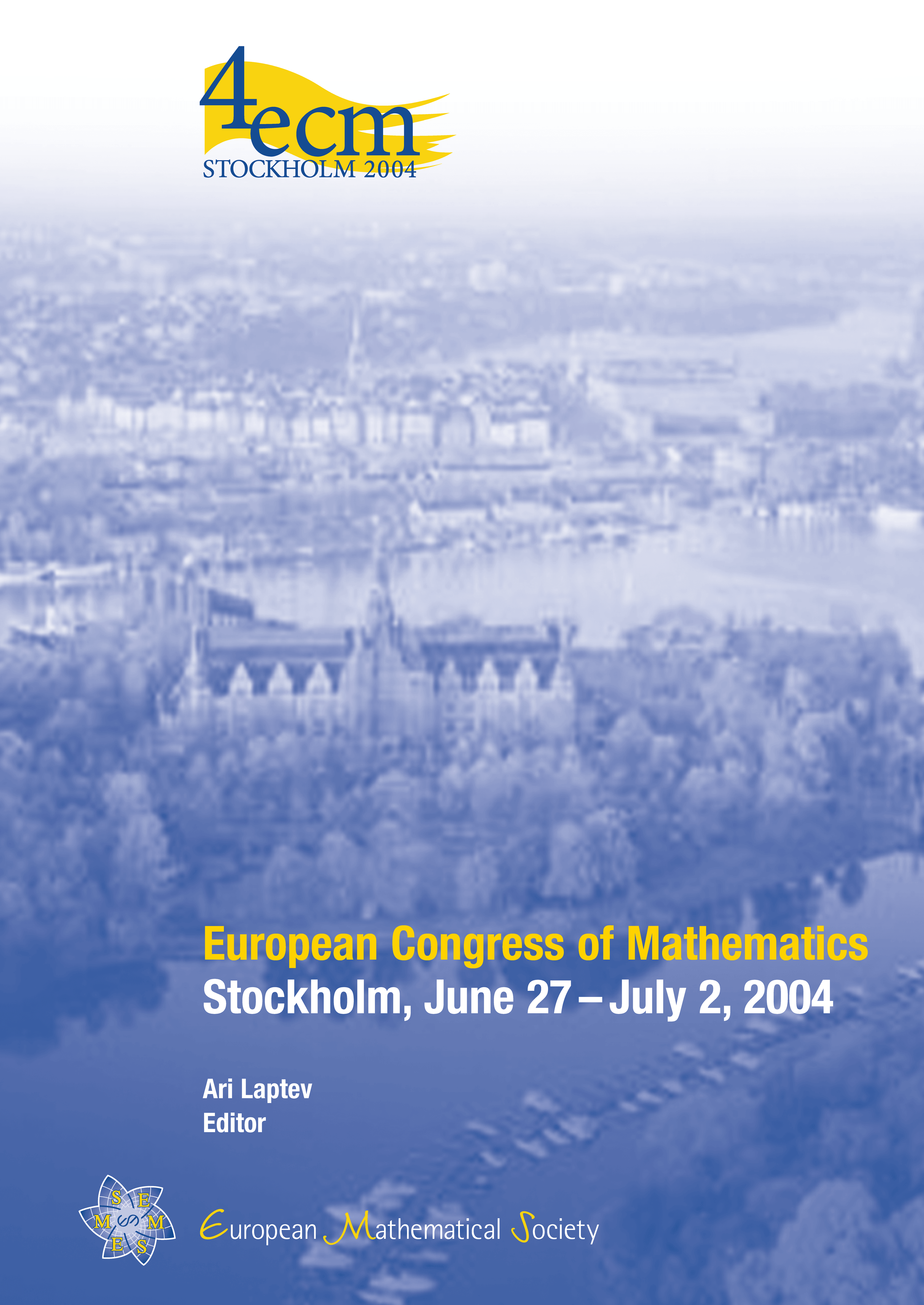Measurable Group Theory
Yehuda Shalom
Raymond and Beverly Sackler Faculty of Exact Sciences, Tel Aviv, Israel

A subscription is required to access this book chapter.
Abstract
Measurable group theory aims at understanding how much of the algebraic structure of a countable group can be recovered solely from the equivalence relation of “being in the same orbit”, induced by (specific, or all) finite measure preserving actions of the group. It turns out that some groups (e.g., abelian) lose “most” of their structure, while for others the opposite happens, to the extent that occasionally both the group and the action can be entirely reconstructed from the equivalence relation. This theme turns out to be a common playground for diverse areas of research including ergodic theory, operator algebra, and descriptive set theory. It can also be viewed as the “measurable younger brother” of geometric group theory; a perspective (due to Gromov), which is found to be fruitful in both disciplines. Nowadays, following five to six years of rapid progress involving the introduction of diverse and deep tools, it may be considered as an independent – even if interdisciplinary – area of research in its own right.
The purpose of this survey is to describe the foundations of the discipline on one hand, and its most recent exciting developments on the other, in as friendly and non-technical a manner as possible. The vast majority of results presented here appeared over the past six years, and of those many had not been published at the time of writing this paper. Proofs are not given, and occasionally even the results themselves are not stated in their full generality. Rather, the emphasis is on the main ideas, approaches, and concepts underlying the results, along with the connections between them. Each of the sections of the paper actually deserves a considerably more detailed exposition, and we hope that the inevitable omission of some results will be received with understanding. We do try, however, to offer a fairly complete list of relevant bibliography to which, at appropriate places, readers are referred for further details. We hope that while helping to bridge the “cultural differences” present in this interdisciplinary area, the exposition will also serve as an attractive and welcoming invitation for mathematicians working in neighboring fields, as well as graduate students taking their first steps.